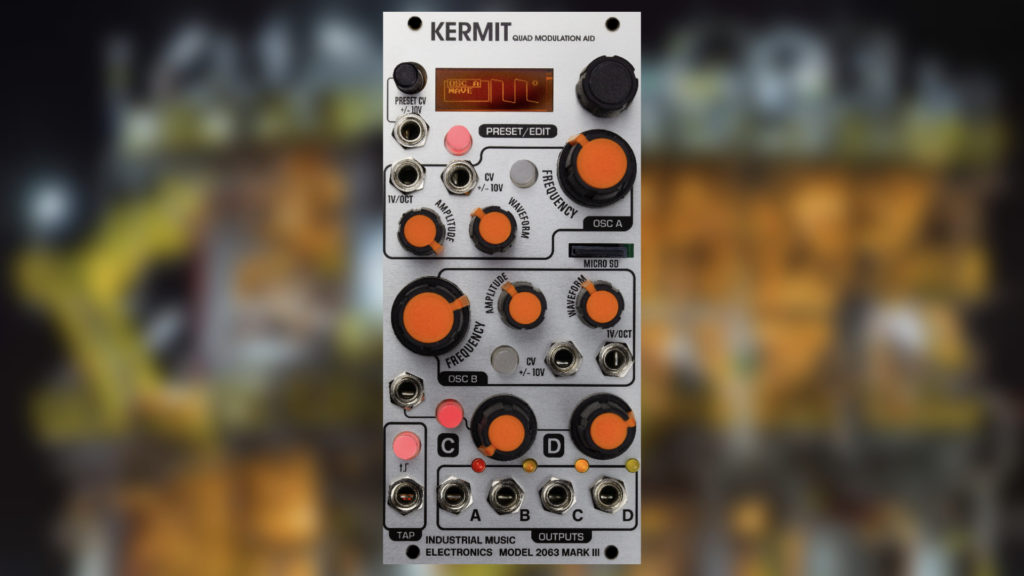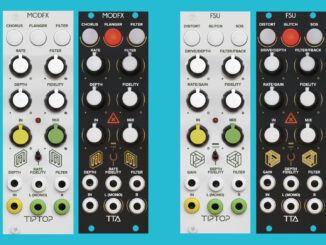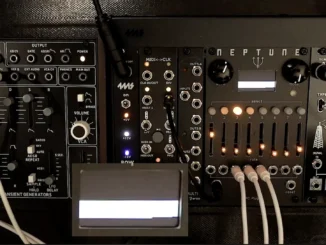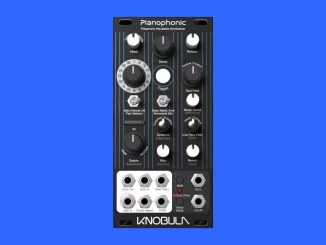For Superbooth 20 Home Edition, Scott Jager from Industrial Music Electronics is showing a revised version of his Kermit Super Modulator module. “Super Modulator” because it has 4 tempo-synchronized modulation channels that can be used extremely flexibly. Each channel can be an LFO, audio rate oscillators (with 1v/octave response on two channels), 1-shot envelopes, random voltage generators or sample-&-holds. Everything the spoiled modulation heart desires.
All the outputs respond to manual control, external control voltages and can be synchronized to the module’s master tap tempo clock. All the parameter settings can also be saved as presets in the module. Perfect for live performances or modulations that you want to use again and again. Thanks to a built-in modulation matrix, the modules provide a lot of possibilities and deep control for the external CV inputs.
Designed for maximum patching power in small systems, Kermit has an extremely high functionality-per-HP factor and fast, recallable operation dependable in live performance.
Kermit MK3 offers a large number of different functions in one module that are available on every channel: LFO (1 volt/octave), LFO (with reset), tap tempo LFO, audio oscillator, audio oscillator (unison), code scan, 1-shot envelope, gated repeat envelope, tap tempo envelope, smooth random, stepped random, tap tempo stepped random, sample-and-hold, track-and-hold, tap tempo sample-and-hold and channel copy.
A 16-bit DAC is built-in that accurately render subtle changes of voltage at extremely low frequencies. It’s nice to see that the version revision can still be used as a fuzzy/aggressive digital oscillator. With the waveform character knob, you can manipulate the timbre of the oscillator from pretty normal to dirty. This goes all the way down to 8bits/32 samples similar to the Konami SCC sound processing chip. Three parameters on each channel can be modulated: frequency, amplitude, or waveform. Both external CV input and internal cross-modulation affect these parameters by holding down buttons and turning the destination knobs.
That the oscillator function in this modulation module is not just a gimmick shows the next feature. It features a microSD card slot for loading custom waveforms (.wav) created in the free software editor containing 64 waveforms. Kermit then organized the waveforms into 8 banks of 8 waveforms each. Each oscillator can select any of the 8 banks, and the 8 constituent waves can be smoothly morphed from one to another. So it operates like a wavetable oscillator.
Further, it offers a morphing preset manager that lets you create delightfully unexpected variations of the basis preset. This can be also triggered or modulate with CV.
Industrial Music Electronics Kermit Mk3 is available now for 419€ worldwide.
More information here: IME





Be the first to comment